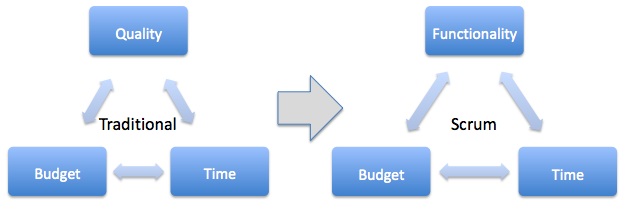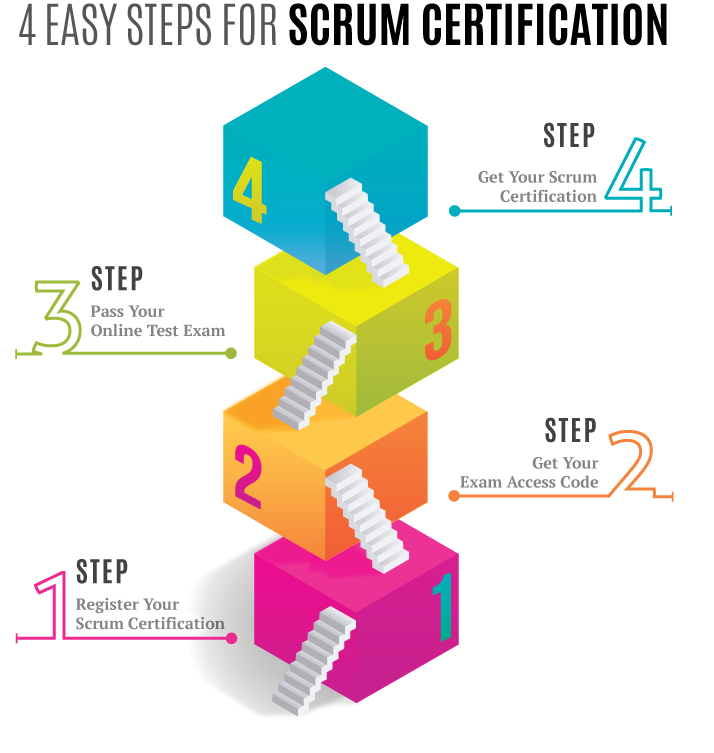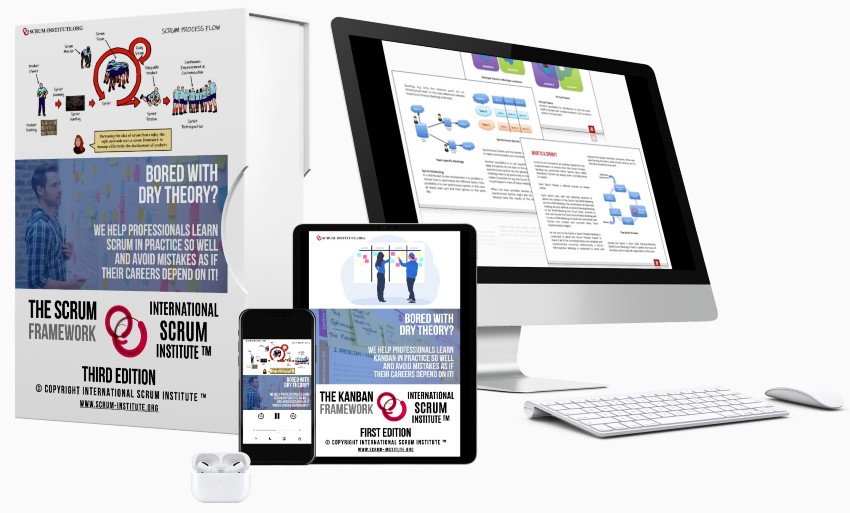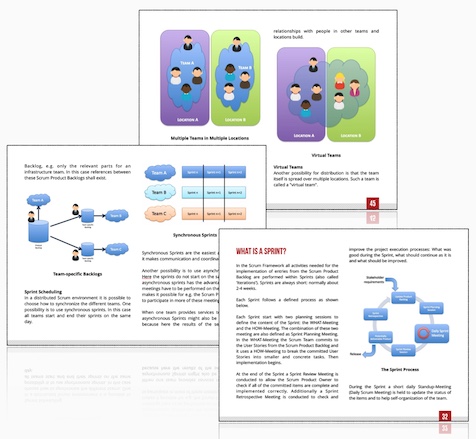What Makes The Scrum Framework Succeed? This Might Surprise You!
The Scrum Framework changes the classic triangle of project management.
Organizations do no longer need to sacrifice one
of the time, budget, or quality. The new triangle is
now emerging between the budget, time, and
functionality. And none of these project success
elements have to be endangered.

Triangle of Project Management
According to the Scrum framework, quality is
no longer optional. To deliver what clients are
paying for to flourish their businesses, the Scrum
Teams strive to provide the best possible
software they're jointly able to build.
In the Scrum framework, the factors which
define when a feature is complete and when
it meets the required quality standards are
set by Definition of Done (DoD). DoDs specify
the expected outcome in terms of functional and
non-functional requirements, design, coding, unit
testing, end-user validations, documentation,
and so on. DoDs are defined in the levels of both
user stories and tasks. DoDs of user stories focus
on functional and non-functional client requirements,
whereas DoDs of tasks focus on the
desired working activities from the Scrum Team
members.
The Scrum Team is not allowed to close the user
stories, and obviously, the tasks that do not fulfil
their DoDs. Scrum Product Owner and the Scrum
Team define user stories and their tasks throughout
the course of the Scrum software engineering
process incrementally.
This incremental development allows the
team to remain adaptive and adjust their
next best actions in a controlled manner
without the additional costs and risks of
jeopardizing large chunks of previous work.
The Scrum Team builds a potentially shippable
software product increment until the end of each
Sprint. The team demonstrates and discusses
these increments with the Scrum Product Owner
and client stakeholders to get and incorporate
their feedback towards the next steps of their
project.
This flexibility applies to not only software
delivery but also the operational processes. So,
the Scrum Framework allows the optimization
of the use of resources (human, time, budget,
material) and the minimization of wastes.
Studies have shown that Scrum has the following
positive effects in practice:
- More frequent code deployments,
- Faster lead time from committing to deploying code,
- Faster mean time to recover from downtime,
- Lower change failure rate,
- Better product quality,
- Reduced or identical costs compared to pre Scrum deployment,
- Improved productivity and throughput,
- Improved code and operational reliability,
- Enhanced organizational performance and client satisfaction,
- Improved market penetration, market share, and profitability of organizations,
- Improved market capitalization growth,
- Improved motivation of employees.
Introducing and adopting the Scrum Framework
is non-trivial. And yet, the adaptive and iterative
approach of the Scrum Framework handles this
initial burden, and it copes with ever-changing
client and business requirements better.
Thus, the Scrum Framework is, in most cases,
a better alternative to the classical software
engineering methodologies.
Share It With Your Colleagues and Friends to Help Them Learn:
What Makes The Scrum Framework Succeed? This Might Surprise You!
|
|

|

|

|

|
|
 SCRUM INSTITUTE™
SCRUM INSTITUTE™






